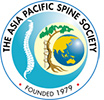High tibial osteotomy is a surgical procedure performed to relieve pressure on the damaged site of an arthritic knee joint.
It is usually performed in arthritic conditions affecting only one side of your knee and the aim is to take pressure off the damaged area and shift it to the other side of your knee with healthy cartilage. During the surgery, your surgeon will remove or add a wedge of bone either below or above the knee joint depending on the site of arthritic damage.
High tibial osteotomy is commonly used for patients with osteoarthritis that is isolated to a single compartment (unicompartmental osteoarthritis). It is also performed for treating a variety of knee conditions such as gonarthrosis with varus or valgus malalignment, osteochondritis dissecans, osteonecrosis, posterolateral instability, and chondral resurfacing.
Procedure
The goal of the surgery is to release the involved joint compartment by correcting the malalignment of the tibia and to maintain the joint line perpendicular to the mechanical axis of the leg. There are two techniques that may be used: closing wedge osteotomy and opening wedge osteotomy. The surgeon determines the choice of the technique based on the requirement of the patient.
Closing wedge osteotomy
Closing wedge osteotomy is the most commonly used technique to perform high tibial osteotomy. In this procedure the surgeon makes an incision in front of the knee and removes a small wedge of bone from the upper part of the tibia or shin bone. This manipulation brings the bones together and fills the space left by the removed bone. The surgeon then uses plates and screws to bind the bones together while the osteotomy heals. This procedure unloads the pressure off the damaged joint area and helps to transfer some of the weight to the outer part of the knee, where the cartilage is still intact.
Opening wedge osteotomy
In this procedure the surgeon makes an incision in front of the knee, just below the knee cap and makes a wedge-shaped cut in the bone. Bone graft is used to fill the space of the wedge-shaped opening and if required plates and screws can be attached to further support the surgical site during the healing process. This realignment increases the angle of the knee to relieve the painful symptoms.
Post-operative care
After high tibial osteotomy surgery patients may require two to four days of hospitalization. Immediately after surgery a light compressive knee brace or splint may be used to protect the knee and pain medications are given to reduce pain or swelling. During this time patients are instructed to follow post-operative protocols for a successful outcome.
Post-operative instructions include the use of TED stockings to reduce the risk of clot formation, crutch walking and physical therapy. Physical therapy includes range of motion exercises and strengthening exercises to restore range of motion and improve muscle strength. Physical therapy may begin the day after surgery to help the patient to move in and out of bed and to learn to use crutches in a safe manner. Crutch walking involves using crutches without weight bearing on the operated leg immediately after the surgery to allow the bone to heal. After a few weeks, progression to partial weight bearing in the operated leg will be encouraged.
Complications
As with any surgery, patients undergoing High tibial osteotomy surgery are at risk for developing certain complications following the surgery. Complications following high tibial osteotomy may include infection, skin necrosis, non-union (failure of the bones to heal), nerve injury, blood vessel injury, failure to correct the varus deformity, compartment syndrome and deep vein thrombosis or blood clots.
Click on the topics below to find out more from the orthopaedic connection website of American Academy of Orthopaedic Surgeons.
- ACL Injury: Should it be fixed?
- Activities After a Knee Replacement
- Additional Resources on the Knee
- Adolescent Anterior Knee Pain
- Arthritis of the Knee
- Care of the Aging Knee: Baby Boomers May Need Lifestyle Changes
- Cemented and Cementless Knee Replacement
- Deep Vein Thrombosis
- Frequently Asked Questions about Osteoarthritis of the Knee
- Goosefoot (Pes Anserine) Bursitis of the Knee
- Knee Arthroscopy
- Knee Arthroscopy Exercise Guide
- Knee Implants
- Knee Replacement Exercise Guide
- Kneecap (Prepatellar) Bursitis
- Meniscal Tear
- Meniscal Transplants
- Minimally Invasive Total Knee Replacement
- Nonsurgical Treatment Options for Osteoarthritis of the Knee
- Orthopaedists Research Female Knee Problems
- Osgood-Schlatter Disease (Knee Pain)
- Osteonecrosis of the Knee
- Posterior Cruciate Ligament (PCL) Tear
- Rotating Platform/Mobile-bearing Knees
- Runner’s Knee (Patellofemoral Pain)
- The Knee
- Total Knee Replacement
- Unstable Kneecap
- Viscosupplementation Treatment for Arthritis















